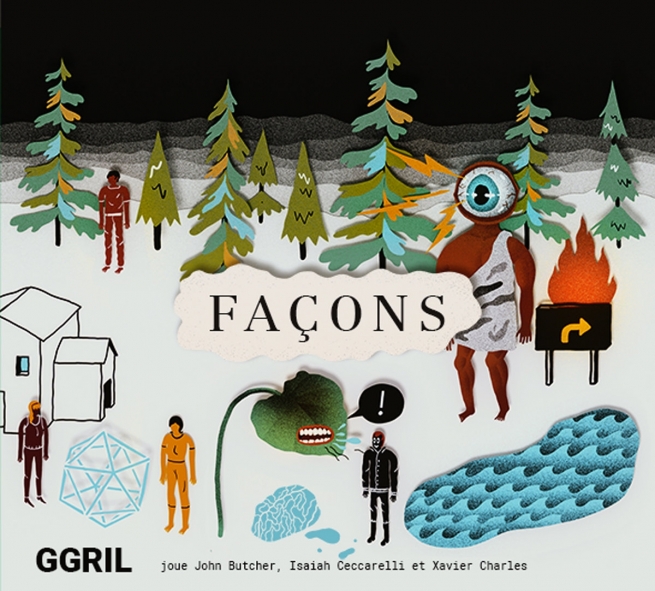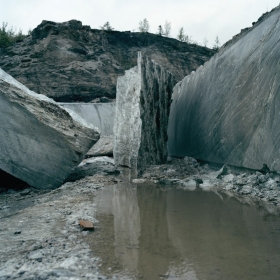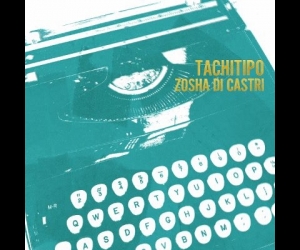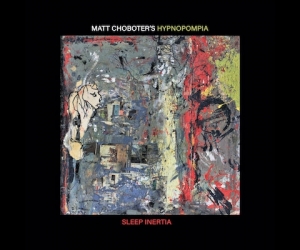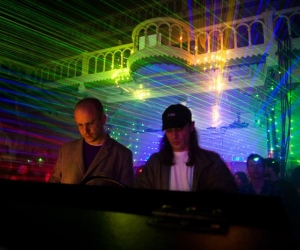Through his singular drive, devotion, and inventiveness,
Éric Normand has made Rimouski, a small Quebec city over 500 kilometres from Montreal, a thriving centre for free improvisation. He has an improvising orchestra, GGRIL (Grande Groupe Régional d’Improvisation Libérée), an annual festival, and a busy record label, Tour de Bras. Two recent CDs document the remarkable quality of music that these activities have fostered.
Façons is a two-CD set of three pieces performed by GGRIL, each piece by a different composer, each with a different guest improviser. The first work, Organon, is a drone piece composed by Montreal percussionist-composer Isaiah Ceccarelli. Played by a seventeen-member group, including English saxophonist Caroline Kraabel, it begins as a teeming, swelling mass of sound around a series of dissonant chords that build in power and depth, creating the illusion of a much larger ensemble. In part, it’s the emphasis on low frequencies (baritone and bass reeds, multiple electric and acoustic basses) that creates that dense texture, but it’s the way the piece thins out that makes it distinctive and beautiful, gradually emphasizing trumpeter Alexandre Robichaud’s timbral clarity. The next piece, Sur les genoux (On the Knees), is a brief listening exercise created by French clarinetist Xavier Charles and performed with guest tenor saxophonist Ingrid Laubrock. Whatever the method, it results in a quiet carpet of shifting sounds—some regular, like plucked strings; others, like brief reed and percussion sounds, almost incidental.
The major work is the six-segment Local Fixations: composed by English saxophonist John Butcher and featuring him, it was created in April 2018. “Interested in the contrasts of timbres and manners,” according to the liner notes, each of its segments brings forth fresh dimensions from the thirteen-member version of GGRIL. That’s directly related to Butcher’s own ever-expanding range, which includes forays back to the “energy music” phase of free jazz. The Sharp-Eyed Gods segment is particularly remarkable, built on a series of sudden eruptions that resemble the effect of dropping an old spring reverb unit, plus explosions of bass and percussion that trigger brief solos, including a melodious classical guitar. Collective Memories II moves from light, overlapping instrumental voices to chaotic density, Butcher’s soprano running fleetly through both. By the time the gravelly, sustained voices arise at the end of the ultimate Floating Amphora, every voice in the ensemble has had its significant say.
In the week following, Normand and bass clarinetist Philippe Lauzier, partners in the duo Not the Music, toured with Butcher as a trio. How Does This Happen? documents concerts in Ottawa and Montreal, each the kind of music that succeeds in inverse proportion to its potential to be described. In each piece, we hear series of notes, sometimes multiphonic, sometimes singular, sometimes in repeated two- or three-tone micro-phrases; sometimes the sounds can be comfortably ascribed to individual instruments, sometimes less so, but it doesn’t seem to matter. Normand plays electric bass and objects, but he has succeeded so happily in transcending the electric bass’s typical sound that it’s more likely identifiable as “non-reed.” Even on a recording, one realizes that the sounds interacting in the room, the re-enactment and resonance of sounds within sounds, have become as important as any musician’s individual notes, and that the composition is as much the room’s; as much, ultimately, the auditor’s, as the initiating trio’s. How Does This Happen? It’s either a very long story or something felt immediately.
